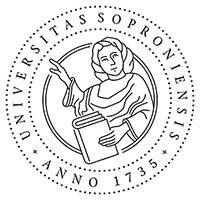Eastern Croatian Youth’s Perception of the Multicultural Reality
Abstract
In most democratic societies, schooling is recognized as a key means by which young people are educated for multicultural reality. It has long been recognized that young people have a key role in the process of strengthening democracy and promoting cosmopolitan citizenship. The main aim of this paper is to examine students’ attitudes towards their nation and to determine social distance to certain European nations and their willingness to participate in different relationships with other members in certain life situations. Specific problems of this research are directed at determining young people’s social distance to members of their and other nations regarding respondents’ gender and type of faculty. The research examined attitudes of 164 students of the University J.J. Strossmayer in Osijek at the Faculty of Electrical Engineering, the Faculty of Law and the Faculty of Teacher Education. In order to determine young people’s attitude to own nation, formed under the influence of social processes in wider, international context, we have used Bogardus scale of social distance and attitude scale related to young people (dis)connectedness to their nation. The research results indicate that social distance, in a number of examined categories, is smaller than in previous pieces of research, although having the same orientation. Taking into consideration the importance of interculturalism in Eastern Croatia, it is essential to create an extensive institutionalised approach to this issue.
References
Amin, A., & Moore. S. (2003). Regimes of Youth Transitions: Flexibility and security in young people's experiences across different European contexts. Young 14 119–141. doi: https://doi.org/10.1177/1103308806062737
Baranović, B. (2002). Mladi u Hrvatskoj-između nacionalnog identiteta i europske integracije. In Ilišin, V., Radin, F.(Ed), Mladi uoči trećeg milenija, Institut za društvena istraživanja u Zagrebu, Državni zavod za zaštitu obitelji,materinstva i mladeži, Zagreb.
Barath, A., Matul, D., & Sabljak, LJ. (1996). Korak po korak do oporavka, Zagreb, Tipex.
Chernilo, D. (2006). Social Theory's Methodological Nationalism, Myth and Reality. European Journal of Social Theory 9 (1) 5–22. doi: https://doi.org/10.1177/1368431006060460
Eriksen, T. (2003). Ethnicity and Nationalism, London- Boulder, Pluto Press.
Giddens, A. (1999). Modernity and Self-Identity. Self and the Society in the Late Modern Age. Cambridge: Polity Press
Katunarić, V. (1991), Dimenzije etničke distance u Hrvatskoj, In Mahtijević, Š., Lazić, M. (Ed) Položaj naroda i međunacionalni odnosi u Hrvatskoj, Institut za društvena istraživanja, Zagreb.
Kellas, James G. (1991). The politics of Nationalism and Ethnicity. Hong Kong: Macmillan Education Ltd. doi: https://doi.org/10.1007/978-1-349-21527-0
Lazere, D. (2005). The contradictions of cultural conservatism in the assault on American colleges, Cultural Studies, 19 415–422. doi: https://doi.org/10.1080/09502380500219332
Malenica, Z. (2003). Etničke i nacionalne predrasude u hrvatskom društvu danas, Institu za društvena istraživanja, Zagreb.
Malešević, S., Uzelac, G. (1997). Ethnic distance, power and the war: the case of Croatian students, Nations and Nationalism, 3(2) 291–298. doi: https://doi.org/10.1111/j.1354-5078.1997.00291.x
Munjiza, E., Peko, A. (2004). Gledišta mladih o drugim narodima u multikulturalnoj istočnoj Slavoniji. Napredak 3(145), str. 305–319.
Piršl, Elvi (1996). Istra i interkulturalni odgoj. Društvena istraživanja 5-6(25-26), 895–913..
Popis stanovništva (2001). Narodnosni sastav stanovništva Hrvatske po naseljima. available on: http://www.dzs.hr.
Preston, P.W. (1997). Political/ Cultural Identity. Citizens and nations in a Global Area. London: Sage. doi: https://doi.org/10.4135/9781446279335
Radin, F. (1988), Hijerarhije i strukture društvenih vrijednosti, In Radin, F.(Ed) Fragmenti omladine. Zagreb. RKSSOH/IDIS
Sablić, M. (2005). Stavovi srednjoškolaca istočne Slavonije prema pripadnicima različitih nacionalnih skupina, Zagreb. Napredak 146(1) 27–36.
Šiber, I. (1997). War and the changes in social distance toward the ethnic minorities in Croatia, Politička misao, vol. 3485 3–26.
Downloads
Published
Issue
Section
License
Copyright (c) 2011 Sablić Marija, Peko Anđelka

This work is licensed under a Creative Commons Attribution-NonCommercial-NoDerivatives 4.0 International License.








